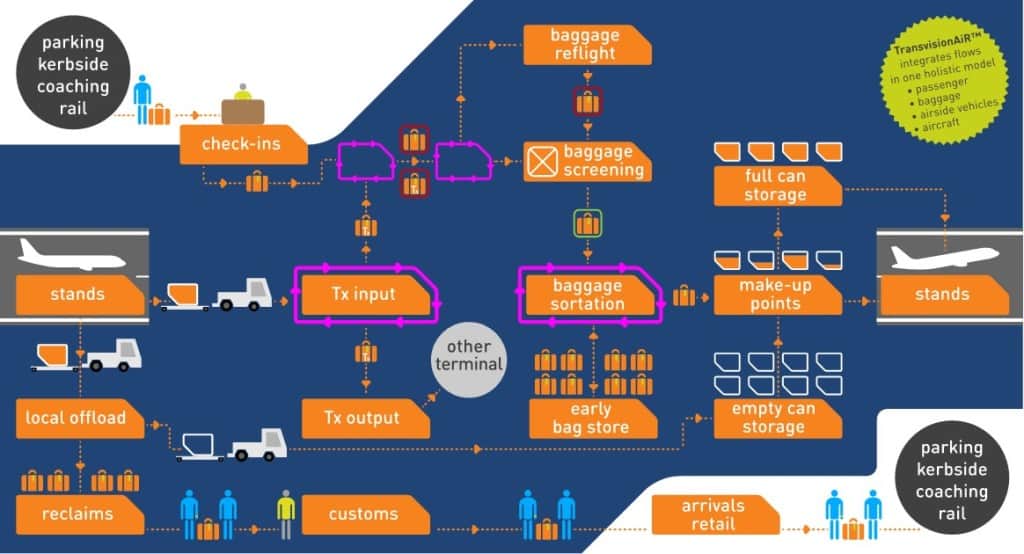
As Part One of this blog looked at the complex and lengthy journey involved for baggage at airports, in Part Two we explore the challenges of this process. How can airports improve Early Bag Stores and Make Up Points to create more efficient airports and a better passenger experience?
Early Bag Stores
Early Bag Stores (EBS) act as a buffer for the baggage journey, providing convenience for both the passenger and the airport.
As passengers now expect to be able to Check-in their baggage at any time, EBS offers the flexibility for newer automated and online Check-ins that airports without sufficient EBS would struggle with. An efficient space to store bags before they are needed to travel to the Make Up Points gives airports more scope to work around both passengers and airlines.
This can also improve capacity at Check-in. It allows more passengers to flow through the airport without the definitive peaks and troughs that will occur if Check-in is more structured and less flexible.
Cost saving is also a benefit that can be attained with better EBS. Airlines, airline alliances and ground handlers reduce costs by reducing staffing levels. Luggage can be also held with longer transfer times, another cost saving.
Baggage MUP plan
There are 2 types of MUP plans:
- A Conventional MUP plan provides a maximum allocation within an agreed timeframe.
- A Compressed MUP plan provides a minimum allocation in a reduced timeframe
The MUP provides an overview of who is allocated space to build Unit Load Device, helps to allocate resources and helps understand and manage logistics. It can also identify peaks and troughs within baggage sortation to create a better understanding of demand and staffing levels. Additionally, the Compressed MUP plan frees up space to accommodate additional flights and enables faster and more reliable baggage connections.
Theses advantages to MUP plans, conventional or compressed, give airports a better overview of the baggage journey, allowing them to plan ahead and create more efficient airports, both in terms of capacity and cost.
This approach gave great benefits when AIQ provided a 2D Baggage System simulation model for GMR Hyderabad. Analysing Baggage Flows through the system, this simulation was undertaken against existing schedules and assumptions to create a calibrated model, from which spatial and capacity options could be derived and evaluated. We also investigated Baggage Make-up demand and capacity plans, Passenger Check-in demand capacity plans, Emigration demand and Screening demand. By informing the airport of new and different processes, we were able to increase efficiency and capacity for the baggage process at GMR Hyderbad.
To get more detail about the advantages of EBS and MUPs and how they can improve your airport, download our White Paper, Baggage Handling in May.

